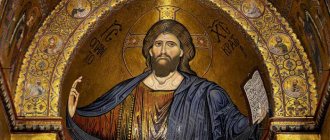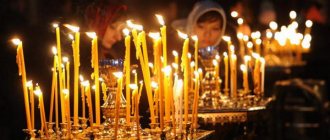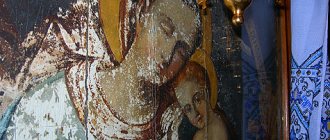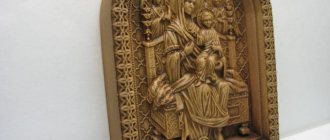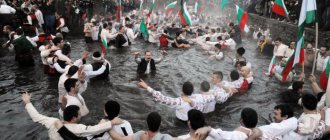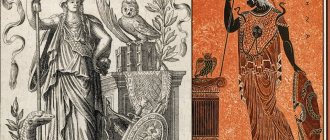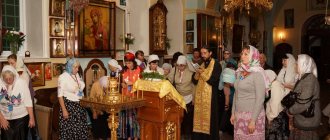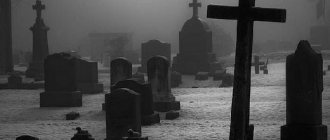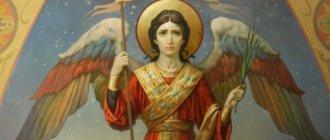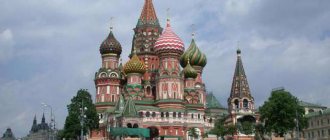The icon “Church Militant” received its name not from church ministers, but from Soviet art critics. In fact, the icon is called “Blessed is the army of the Heavenly King”, after the first line of the liturgical hymn about the martyrs, which states that all the martyrs who suffered for the Savior and accepted death in His name become members of the army of the Heavenly King.
After his successful campaign against Kazan in 1552, Tsar Ivan the Terrible ordered an icon to be painted on this subject. It is not known exactly when the royal order was completed. Archpriest Andrei, the royal confessor (later Athanasius, Metropolitan of Moscow), is usually named as its creator. Since 1919, the icon “Church Militant” (16th century) has been in the Tretyakov Gallery.
The origins of the name and the mystery of the authorship of the holy image
The 16th century entered history under the auspices of Ivan IV the Terrible, who conquered the Kazan and Astrakhan khanates. During this period, he ordered the archpriest of the Annunciation Cathedral of the Moscow Kremlin, Andrei, to paint an icon. The authorship has not been reliably confirmed, but historians consider him as the only suitable candidate. The decisive fact was the direct participation of Archpriest Andrei (later Metropolitan Afanasy) in the Kazan campaign. He blessed the Slavic army for their feat of arms.
The true name of the icon is “Blessed is the army of the Heavenly King”
The archpriest was a product of the Stroganov school of icon painting, which was distinguished by a special style of painting. Their handwriting is typical:
- beauty;
- poetry;
- purity of colors;
- landscape panoramas;
- virtuosity.
The true name of the icon is “Blessed is the army of the Heavenly King.” It is taken from the first line of a hymn about martyrs. It is read at morning services on Mondays. The main idea of the stichera emphasizes that only those who suffered for Christ can become heavenly warriors . The second name – “Church Militant” – was given to the icon by Soviet art historians who studied it.
Plot sources[ | ]
The source of such iconography “Blessed is the host...” is the Revelation of John the Theologian[1]. It describes the Heavenly Jerusalem (Rev. 21:10-21), the river of water of life flowing from it (Rev. 22:1), as well as the burning city of Babylon the Great (Rev. 18:18-20).
In addition to the Holy Scriptures, the plot of the icon finds analogies in Orthodox chants. Thus, in many hymns in honor of the martyrs, it is especially emphasized that they, repeating the feat of “the hero of Christ,” are the first to reach the “heavenly refuge.” Also in the texts of the Octoechos there are hymns in which Jesus Christ holds crowns, and a host of angels flies with them to meet the warriors[1]. A direct indication of the plot of the icon contains the martyr of the 9th canon of the morning canon of Wednesday - “ The regiment is assembled by God, the heavenly army, the chosen cathedral, the holy canopy has appeared, you are the all-validated martyr of the Savior, the evil one destroying the city with Divine grace
».
The image on the icon of the army entering Heavenly Jerusalem exactly corresponds to the text of the message of Metropolitan Macarius, with which he addressed its participants before the start of the Kazan campaign. In it, to the soldiers who die on the battlefield, he promises: “ according to the spoken word of the Lord, he will receive the second martyr’s baptism through the shedding of his blood... and he will receive from the Lord God in the corruptible the incorruptible and heavenly place and in the labor of the place of entry into the highest city of Jerusalem the inheritance
"[7]. Later, the Metropolitan, in his message to Sviyazhsk, compared the feat of the Russian army during the conquest of Kazan with the feat of Christian martyrs and confessors[1].
When studying the icon “Blessed is the host...”, researchers at first refused to give it any interpretation [8], then they saw in it a connection with the letters of the Apostle Paul [9] [10], later they began to consider it as the apotheosis of the capture of Kazan [11], undertaking attempts to identify the characters depicted on it.
Description and plot of the icon “Church Militant”
The size and content of the painting are striking in its scale. The idea is consonant with the Revelation of John the Theologian, the writings of the apostles and prophets. The multi-figure painting draws a parallel between the fate of Israel and Russia, thereby emphasizing the divine choice of the Moscow state and Moscow.
The central place on the canvas is given to soldiers, on foot and on horseback. Their leader, Archangel Michael, sits on a winged horse. The procession starts on the right side, from the city engulfed in flames, and heads towards the Heavenly Jerusalem, which is located on the left. They are met by the Queen of Heaven, who is holding the Baby Jesus in her arms. The angels heading towards the army carry wreaths in their hands with which they crown the warriors.
Art historians who studied the icon agreed that its plot carries a double message. The burning city is associated with the “abode of the evil one” or with Kazan, which was conquered by Ivan the Terrible. The flames are not intended to destroy it, but to cleanse it of filth. The male figures, according to historians, are the predecessors of Ivan the Terrible on the throne. The destination is Heavenly Jerusalem, which is interpreted as an image of Moscow.
Only warriors killed in battle receive wreaths from angels. The author in his work conveyed the main idea of Christian feat - to win, even if after death. You can reach the gates of the Holy City by winning the Last Battle and going through the Last Judgment.
A masterpiece of icon painting - the icon of the Militant Church
Warrior figures
Archangel Michael is depicted on a winged horse in front of the middle detachment, immediately behind him is a young warrior with a banner in his hands, standing out from the general background thanks to his scarlet cloak. It is believed that this is the tsar himself (at the time of the capture of Kazan he was 22 years old). He, just like the Archangel Michael the Archangel, faces the military column, calling on the soldiers to go forward.
In the center of the column stands a huge figure on a horse and with a cross. Some scientists believe that this is Vladimir Monomakh, whose heir Ivan the Terrible considered himself to be; according to others, Emperor Constantine the Great, who turned Christianity into the dominant religion in the Roman Empire. The foot soldiers are followed by three horsemen: this is Prince Vladimir, the baptist of Rus', and his sons Princes Boris and Gleb, the first Russian saints.
At the head of the top row is Dmitry Donskoy riding on a horse, the bottom row is headed by Alexander Nevsky and St. George the Victorious. Among the soldiers of these ranks, it was possible to identify a number of revered saints, although many researchers believe that the icon should be perceived allegorically, without reference to any historical events.
( 2 ratings, average: 5.00 out of 5)
What to pray for in front of the “Church Militant” icon
The original title of the icon is “Blessed is the army of the Heavenly King,” which is taken from the first line of the chant of the morning and evening services. It is dedicated to the memory of soldiers who died as martyrs. By offering prayer in front of the icon, they remember those who died in battles for a just cause.
Righteous people who have renounced sinful acts and observed all the prescriptions of the holy book often remain unheard and misunderstood. “Warriors of the Heavenly King” become everyone who did not succumb to temptation and did not turn away from the righteous path, no matter how difficult it may be. Thanks to its secret meaning, understandable to every believer, the icon became a relic of the Orthodox world.
If you find an error, please select a piece of text and press Ctrl+Enter.
Rare and unusual icons
Blessed is the army of the Heavenly King (Church Militant). 1550s; Russia. Moscow; XVI century; location: Russia. Moscow. State Tretyakov Gallery; 396 x 144 cm; material: wood, gold (leaf), natural pigments; technique: gilding, egg tempera
“Blessed is the army of the Heavenly King” (in Soviet art history - “The Church Militant” [1]) is an icon painted in the 1550s by order of Ivan the Terrible in memory of his Kazan campaign of 1552.
The supposed author of the icon is considered to be the archpriest of the Annunciation Cathedral in the Kremlin and the royal confessor Andrei (from 1564 - Moscow Metropolitan Afanasy) [2]. The icon was located at the southern gate of the Assumption Cathedral of the Moscow Kremlin near the royal place. The icon, together with the tsar’s prayer place, decorated with reliefs on the plot of “The Tale of the Princes of Vladimir,” was supposed to demonstrate the continuity of power of the Moscow tsars from the great princes of Kyiv and Vladimir [3]:23. At the beginning of the 20th century, the icon was in the Kremlin’s chrism chamber, and in 1919 it entered the collection of the State Tretyakov Gallery.
Name of the Icon
The name of the icon comes from the first line of the martyr's stichera on the verse of the fifth tone at Matins on Monday: Blessed is the army of the heavenly King: even though earthly beings were passion-bearers, but having tried to achieve the angelic dignity, they were negligent about their bodies, and through the suffering of the bodiless they were honored. Also, through their prayers, Lord, bestow upon us great mercy.
The stichera expresses the idea that the martyrs, having suffered for Jesus Christ and accepted death for him, become warriors of the heavenly King, that is, they are equated to the rank of angels [4]. The origin of the name of the icon from this stichera was established by V.I. Antonova [5]:131.
The name “Blessed is the host...” of the icon in the inventory of the Assumption Cathedral of the early 17th century (“Yes, the royal place has the image of “Blessed is the host of the heavenly king” on a gold icon case, and the icon case is wooden, lined with tin...” [5]), then its name in the inventories they begin to change: “Image of the Most Pure Mother of God and the Terrible Voivode” (1627), “Image of the Most Holy Theotokos and Archangel Michael from the faces of the saints” (1701, the place of the icon is “behind the royal place”) [6].
Plot sources
The source of such iconography “Blessed is the host...” is the Revelation of John the Theologian [1]. It describes the Heavenly Jerusalem (Rev. 21:10-21), the river of water of life flowing from it (Rev. 22:1), as well as the burning city of Babylon the Great (Rev. 18:18-20).
In addition to the Holy Scriptures, the plot of the icon finds analogies in Orthodox chants. Thus, in many hymns in honor of the martyrs, it is especially emphasized that they, repeating the feat of “the hero of Christ,” are the first to reach the “heavenly refuge.” Also in the texts of the Octoechos there are chants in which Jesus Christ holds crowns, and a host of angels flies with them to meet the soldiers [1]. A direct reference to the subject of the icon contains the martyr of the 9th song of the morning canon of Wednesday - “The regiment is assembled by God, the heavenly army, the chosen cathedral, the holy canopy has appeared, you are the all-validated martyr of the Savior, the evil one, destroying the city with Divine grace.”
The image on the icon of the army entering Heavenly Jerusalem exactly corresponds to the text of the message of Metropolitan Macarius, with which he addressed its participants before the start of the Kazan campaign. In it, to the soldiers who die on the battlefield, he promises: “according to the spoken word of the Lord, he will receive the second martyr’s baptism through the shedding of his blood... and he will receive from the Lord God in the corruptible the incorruptible and heavenly place and in the labor of the place of entry into the highest city of Jerusalem the inheritance” [7] . Later, the Metropolitan, in his message to Sviyazhsk, compared the feat of the Russian army during the conquest of Kazan with the feat of Christian martyrs and confessors [1].
When studying the icon “Blessed is the host...”, researchers at first refused to give it any interpretation [8], then they saw in it a connection with the letters of the Apostle Paul [9] [10], later it began to be considered as the apotheosis of the capture of Kazan [11], undertaking attempts to identify the characters depicted on it.
The subject of the icon The Burning City and Heavenly Jerusalem
On the right side of the icon is a burning city. It is attributed as “the city of the evil one” [1], a city abandoned for the sake of a new heavenly city [10]:15, or like Kazan, conquered by Ivan IV during his campaign in 1552 [12]:197. According to art critic V.V. Morozov, this burning city is not destroyed by fire, but is cleansed by it [13]:19. This opinion is based on the message of the Degree Book, which contains a description of the vision of one of the participants in the Kazan campaign, Presbyter Andrei [13]:29 (the future Metropolitan of Moscow Athanasius and the alleged author of the icon): “... clearly not in a dream, but also in reality, right above the city The light that spreads throughout the entire city is unusual in Kazania, and in it there are many pillars of the sun, like a luminous combustion that flares up to the heavens” [14]. Some researchers see in the outlines of the burning city the main mosque of the Kazan Khanate - Kul Sharif, destroyed by Ivan the Terrible [15].
A multi-figured procession of horse and foot soldiers moves from the burning city, heading towards the Heavenly Jerusalem, depicted on the left side of the icon. He is placed on a mountain in the shadow of a red tent and enclosed in a mandorla of red and green circles, open in one place; a road leads to this place along which the soldiers will enter Heavenly Jerusalem. This heavenly city is interpreted as an image of Moscow [6]:185. In it, the soldiers are greeted by the Virgin Mary with the Baby Jesus sitting on her lap. The Infant of God distributes martyr's crowns to the angels for the soldiers. The Garden of Eden grows near the Heavenly Jerusalem. The trees in it have red fruits, but the trees outside the circle of paradise have no fruits, and although they grow along the banks of the paradise river, they already belong to the earthly landscape.
Paradise River
A heavenly river flows from Heavenly Jerusalem. It has complex symbolism: for Pavel Muratov it is the biblical “pure river of the water of life” (Rev. 22:1) [10]:11, for V.I. Antonova the source of water is the manger of Christ in First Rome, and the dried up source is Byzantium, failed to maintain faith and was conquered by the Turks [5]:133. V.V. Morozov points out that if a river flows from the manger of Christ, then two small springs standing next to them can be understood as the Orthodox (the source through which the river flowed) and the Catholic (the dried up source) churches [13]:22 . Then the wide river flowing towards the soldiers is a symbol of the true faith, the zealots of which are the Russian rulers.
The procession of warriors, moving from right to left on the icon, is divided into three rows, each of which is written on a gold background with soil in the form of slides. The heads of the warriors of the upper and lower rows are surrounded by halos.
archangel Michael
At the head of all the ranks of warriors is depicted the archangel of the heavenly powers, Archangel Michael, riding a winged fiery horse. The figure of the archangel is enclosed in a spherical mandorla. The iconography of the Archangel Michael as the heavenly archangel is quite rare for Russian art of the 16th century [13]:19. The Archangel is at the gates of Heavenly Jerusalem and, turning back, calls on everyone else to follow him. The placement of his figure on the icon is due to the fact that the Archangel Michael was revered as the patron of the family of Moscow sovereigns (Ivan the Terrible calls him in his writings the accomplice of all pious kings [16]:45), and the Archangel Cathedral of the Kremlin served as their tomb. Warrior with a banner
Behind the figure of the archangel is a young warrior in a scarlet cloak with a banner in his hands. According to most researchers, this is an image of Tsar Ivan the Terrible[3]:25. The warrior, like the Archangel Michael, turns his gaze to the rest of the warriors, thereby calling on them to follow him. Above his head are depicted three angels holding one crown in their hands. They are understood as the angels of the three kingdoms over which Ivan IV rules - Moscow, Kazan and Astrakhan, and the crown in their hands is the cap of Monomakh [13]: 19-22.
Foot and horse warriors
Behind the warrior with a banner in the crowd of foot soldiers is a large figure of a horseman in royal robes with a cross in his hands. She is identified as Vladimir Monomakh [4] or Emperor Constantine the Great [17]. The main argument in favor of identifying the figure with the cross as Vladimir Monomakh is that Ivan the Terrible “called him the first Russian Tsar, and considered himself his successor and heir to his royal regalia” [4] (identification of this figure with Ivan the Terrible itself is rejected by researchers [11 ]:24-25). Following him on horseback are Prince Vladimir and his sons Boris and Gleb [2]. The figure of this horseman looks huge and stands out against the background of the warriors surrounding her. In fact, she is no larger than the figure of a warrior with a banner or the horsemen following her; the illusion of her “hugeness” is explained by the fact that she is depicted floating above the crowd surrounding her [13]: 17-19.
The top row of soldiers is headed by Prince Dmitry Donskoy and his heavenly patron, Great Martyr Demetrius of Thessaloniki. The leaders of the bottom row are a warrior without a halo with a scarlet banner (possibly George, brother of Ivan IV [13]:25), saints Alexander Nevsky and George the Victorious. In addition to them, the following were identified among the soldiers of the upper and lower ranks: Theodore Stratelates, Andrei Stratelates, Mikhail Chernigovsky, Mikhail Tverskoy, Vsevolod-Gabriel of Pskov, Dovmont-Timofey of Pskov, Theodore, David and Konstantin Yaroslavsky [5]. The identification is connected with the list of saints - patrons of Russian soldiers, contained in the message of Metropolitan Macarius to Kazan. The soil under the feet of the soldiers is depicted in the form of slides.
There is an opinion that such identifications of warriors are unfounded and the icon should be understood as a spiritual allegory without symbolic references to historical events [1]. Based on the words of Metropolitan Macarius from his message to Kazan (“not only will they receive forgiveness of sins from God for shedding their blood, but they will also receive greater rewards from God in this present age” - about the soldiers who will remain alive in battle; “will receive from the Lord God in the perishable place is incorruptible and heavenly and in labor the place of entry of the highest city of Jerusalem is the heritage" - about soldiers who will die in battle), some researchers conclude that warriors without halos are survivors of the campaign against Kazan, and those with halos are those who fell in battle [6]:190. Regarding the division of characters into foot and horse, it is suggested that foot soldiers are black people, and horse soldiers are princes [13]:19.
Similar works
The image of the triumphal procession of the heavenly army, led by the Archangel Michael, is known from other 16th-century icons (for example, the “Last Judgment” icon from the National Museum of Sweden and the Tutaevsky Resurrection Cathedral) and military banners (for example, the “Great Banner” of Ivan the Terrible).
One of the closest earlier analogies of the “Blessed is the host...” icon is a fresco from the Church of the Holy Cross in Patrauti (Romania), painted at the end of the 15th century [6]. It depicts Emperor Constantine (the inscription with his name has been preserved) surrounded by fifteen holy warriors, whose names have not been preserved on the fresco. They follow the Archangel Michael, who points them to an image of a cross in the sky.
A related subject is found on an icon from the monastery of Our Lady of Platythera on the island of Corfu, painted around 1500. On it, two processions move from earthly Jerusalem - the righteous with crosses in their hands rise up to Heavenly Jerusalem, and the second procession descends to hell.
At the end of the 16th century, a reduced list of the “Blessed is the Host...” icon was created for the Chudov Monastery[1]. On it, Archangel Michael is represented as a fiery angel. A number of inscriptions have been preserved on the list, including the names of some saints. At the beginning of the 20th century, this icon was placed in the temple-tomb of Grand Duke Sergei Alexandrovich under the Alekseevsky Cathedral of the Chudov Monastery[9].
Bibliography:
1. Kvlividze N.V. Blessed is the army of the Heavenly King // Orthodox Encyclopedia. - M. - T. 5. - P. 324-325.
2. Lepakhin V.V. Icon and icon veneration through the eyes of Russians and foreigners. - M.: Pilgrim, 2005. - 478 p. — ISBN 5-88060-048-3
3. Podobedova O.I. Moscow school of painting under Ivan IV. - M.: 1972. - 197 p.
4. Lepakhin V.V. Militancy in ancient Russian literature and icon painting. Orthodoxy.Ru.
5. Antonova V.I., Mneva N.E. Catalog of Old Russian painting. — Tretyakov Gallery. - T. 1. - P. 128-134.
6. Kochetkov I. A. On the interpretation of the icon “The Militant Church”: (“Blessed is the army of the heavenly king”) // Proceedings of the Department of Old Russian Literature. - L.: 1985. - T. XXXVIII. — P. 185—209.
7. PSRL, vol. XXIX. M., 1965, p. 89
8. Snegirev I.M. Monuments of Moscow antiquity. - M.: 1842-1845. — P. 167—169.
9. Stepanov M.P. Temple-tomb of Grand Duke Sergei Alexandrovich in the name of St. Sergius of Radonezh in the Chudov Monastery in Moscow. - M.: 1909. - P. 104-105.
10. Muratov P. P. Two discoveries // Sofia. - 1914. - No. 2. - P. 1-17.
11. Karger M.K. On the issue of the image of Ivan the Terrible on the icon “Church Militant” // Collection of ORYAS. - L.: 1928. - T. 101. - P. 466-469.
Presnyakov A.E. The era of Grozny in general historical coverage // “Annals”. - 1922. - No. 2. - P. 195-197.
12. Morozov V.V. Icon “Blessed is the Host” as a monument to journalism of the 16th century // State Museums of the Moscow Kremlin. Materials and research. - M.: 1984. - V. 4: Works of Russian and foreign art of the 16th - early 18th centuries. - P. 17-31.
13. PSRL, T. XXI, Part 2, pp. 626-627
14. Khuzin F., Sitdikov A. On the localization of the historical Kul Sharif mosque in the Kazan fortress.
15. Messages of Ivan the Terrible. - M.-L.: 1951.
16. Smirnova E. S. Moscow icon of the XIV-XVII centuries. - L: 1988. - P. 302.

